Special Additive Report: Viscosity Index Improvers
Dr. Neil Canter, Contributing Editor | TLT Tech Beat September 2011
These enablers of lubrication operations do their jobs across a wide range of temperatures and applications.
 www.canstockphoto.com
www.canstockphoto.com
KEY CONCEPTS
•
Viscosity Index (VI) improvers reduce the dependency of a lubricant’s viscosity to change with either an increase or decrease in temperature and can be used in many different lubricant applications.
•
Two key properties of VI improvers that need to be balanced for a specific lubricant application are shear stability and thickening efficiency.
•
Better fuel efficiency and durability, as well as improved performance can all be achieved through the selection of the proper VI improver.
In formulating product, a lubricant supplier is always thinking about how to meet customer needs. As the need grows to have lubricants function under more stressful operating conditions, the challenge persists to develop a value-added product that can provide excellent performance over a long operating time frame.
One additive that is becoming more important to the formulator in meeting this goal is the Viscosity Index (VI) improver. This additive class helps lubricants work at high performance levels over a wide temperature range.
VI improvers are polymeric materials taken from the following technologies: olefin copolymers (OCPs), polyalkyl methacrylates (PAMAs), polyisobutylenes (PIBs), styrene block polymers (such as styrene isoprene, styrene butadiene) and ethylene alpha olefin copolymers. They are prepared by the polymerization of the appropriate monomers. As more and more applications involve broader temperatures, VI improvers are becoming more important additives to the lubricant formulator.
For this reason, VI improvers are highlighted in this month’s TLT additive issue to provide details on their key functions, determine how to measure their performance and focus on their key applications such as engine oils and hydraulic fluids.
To seek a broad range of opinions, TLT interviewed the following representatives from seven VI improver suppliers:
•
Dewey Szemenyei, director of customer technical services-engine oil, Afton Chemical Corp.
•
Kirk Nass, global VII technology manager, Chevron Oronite Co. LLC
•
Doug Placek, president, Dr. Ramesh Iyer, global business manager-hydraulics, & Joan Souchik, technical service manager, Evonik Oil Additives USA Inc.
•
Dan Vargo, senior research scientist, & Dr. Shanshan Wang, consultant (to), Functional Products Inc.
•
Dr. Stuart Briggs, chief scientist, & Dr. Isabella Goldmints, viscosity modifier technologist, Infineum USA LP
•
Bill Dimitrakis, business manager-viscosity modifiers, & Chris Meldrum, business manager-viscosity modifiers, The Lubrizol Corp.
•
Dr. Shota Abe, senior researcher, Mitsui Chemicals Group.
TLT asked these reps to address the issues and provide further guidance on how to obtain the maximum value out of VI improvers.
KEY FUNCTIONS OF VI IMPROVERS
Dr. Ramesh Iyer, global business manager-hydraulics for Evonik Oil Additives USA Inc. in Horsham, Pa., says, “VI improvers change the viscosity-temperature relationship of a fluid to temper the natural tendency of fluids to thin with increasing temperature and to thicken at lower temperatures. In essence, VI improvers optimize the rheological properties of the lubricant and enable lubricant formulators to expand the temperature operating window of their products.”
Kirk Nass, global VII technology manager for Chevron Oronite Co. LLC in Richmond, Calif., says, “VI improvers provide a ‘boost’ to the high-temperature viscosity while having minimal effect on the lube oil viscosity at low temperature. They also reduce the viscosity of oils in response to shear.”
Dan Vargo, senior research scientist for Functional Products Inc. in Macedonia, Ohio, and a TLT technical editor, discusses the concept of VI: “The relationship between the viscosity of polymers in oil and temperature is expressed as the numerical VI scale. The VI is calculated from the viscosity of the polymer in oil solution at 40 C and at 100 C. The smaller the difference in viscosity at low (40 C) and at high (100 C) temperatures, the higher the VI number or index obtained.
“Most straight paraffinc oils without a VI improver have a viscosity index in the 95-105 range,” Vargo says. “Multigrade oils are formulated within a specific viscosity range by adding polymer. The resulting oil can have a viscosity index in the 105-300 range depending upon the polymer chosen.”
Dr. Stuart Briggs, chief scientist for Infineum USA LP in Linden, N.J., says, “VI improvers (also called viscosity modifiers or VM) change the rheological behavior of a lubricant by reducing the viscosity dependence on temperature. This enables lubricants to meet SAE J300 multigrade requirements, minimize the use of costly synthetic basestocks, meet fuel economy requirements and provide excellent fluidity at low temperatures.”
Figure 1 shows the effect of VI improvers in reducing temperature dependency for an engine oil. Three viscosity-temperature curves are shown for SAE 30, SAE 5W and SAE5W-30 engine oils. The latter exhibits the flattest curve or least change over temperatures ranging from cold starting to the high levels reached during engine operation. An SAE 30 engine oil is able to handle high temperatures but displays a rapid rise in viscosity at lower temperatures. In contrast, the SAE 5W displays comparable viscosity at low temperatures to the SAE 5W-30 oil yet shows a larger reduction in viscosity at higher temperatures.
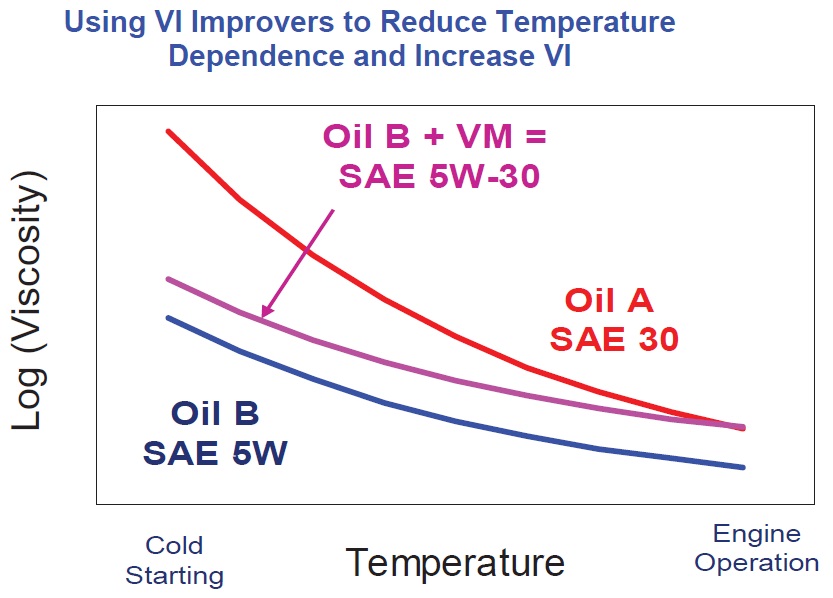 Figure 1. One of the key functions of a VI improver is reducing the temperature dependency of a lubricant, as noted in this engine oil example. (Courtesy of Infineum USA LP)
Figure 1. One of the key functions of a VI improver is reducing the temperature dependency of a lubricant, as noted in this engine oil example. (Courtesy of Infineum USA LP)
Bill Dimitrakis, business manager-viscosity modifiers for The Lubrizol Corp. in Wickliffe, Ohio, lists three key functions for VI improvers. He says, “VI improvers provide the thickening normally obtained through use of a high-viscosity basestock. This allows the formulation of the proper viscosity lubricant that has improved low temperature fluidity and retains viscosity better at higher temperatures.”
Dimitrakis adds, “VI improvers raise the lubricant’s viscosity index, which means that a higher-VI lubricant will change viscosity less as the temperature changes so it retains proper viscosity over a wider temperature range.
The third function for VI improvers involves formulation of multigrade lubricants. Dimitrakis explains, “VI improvers allow the formulation of ‘multiviscosity’ lubricants, which meet the low-temperature viscosity requirements of a lighter grade oil and the high-temperature viscosity of a heavier grade oil.”
Chris Meldrum, business manager-viscosity modifiers for The Lubrizol Corp. adds a fourth function. He says, “VI improvers provide important nonviscometric performance such as improved piston cleanliness and deposit control, reduced viscosity increase and control of soot-mediated viscosity increase or wear, along with durability of seals and friction materials.”
Dr. Shota Abe, senior researcher for Mitsui Chemicals Inc. in Japan, says, “Besides reducing the viscosity dependence of lubricants on temperature, recent market needs require VI improvers to maintain the viscosity of the lubricant for a longer operating interval than before.”
Dewey Szemenyei, director of customer technical services-engine oil for Afton Chemical Corp. in Richmond, Va., says, “VI improvers need to have a greater relative thickening effect at high temperatures than low temperatures, not adversely impact low temperature, display low shear viscosity and have an appropriate level of permanent and temporary shear loss for the application.”
HOW DO VI IMPROVERS WORK?
VI improvers act through swelling of the polymer chain as the temperature rises to offset the decrease in base oil viscosity.
Vargo says, “The addition of polymer to base oil in the lubricant results in the interaction (diffusion) of the oil into the space around the polymer molecules. VI improvers act because the hydrodynamic polymer coil size increases as the temperature rises to offset the decrease in base oil viscosity. When the VI improver polymer dissolves in oil, long molecular chains form polymer coils in the oil.
“As the temperature rises, the polymer chains become more relaxed and tend to be fully extended,” Vargo adds. “This results in an increase in the hydrodynamic polymer coil size, which increases the fluid flow resistance. The net result is a relatively stable viscosity balance over a wide temperature range.”
Briggs notes how VI improvers eliminate the double-exponential dependency between viscosity and temperature: “The viscosity of base oils exhibits double-exponential dependence on temperature, meaning the viscosity drops very rapidly with increasing temperature and conversely increases as temperature drops. VI improvers work by adding practically the same percentage of viscosity at any temperature, thus eliminating the double-exponential dependence. This phenomenon is due to the fact that the volume that VI molecules occupy in the base oil is almost independent of temperature, and the viscosity boost is proportional to this volume.”
The uncoiling effect of the polymer is shown in Figure 2 in comparing viscosity-temperature curves of base oil and base oil blended with VI improver. A fairly condensed polymer chain contributes less to fluid viscosity at low temperatures. But at higher temperatures, the polymer is more solvated by the base oil and uncoils to impart viscosity to the base oil.
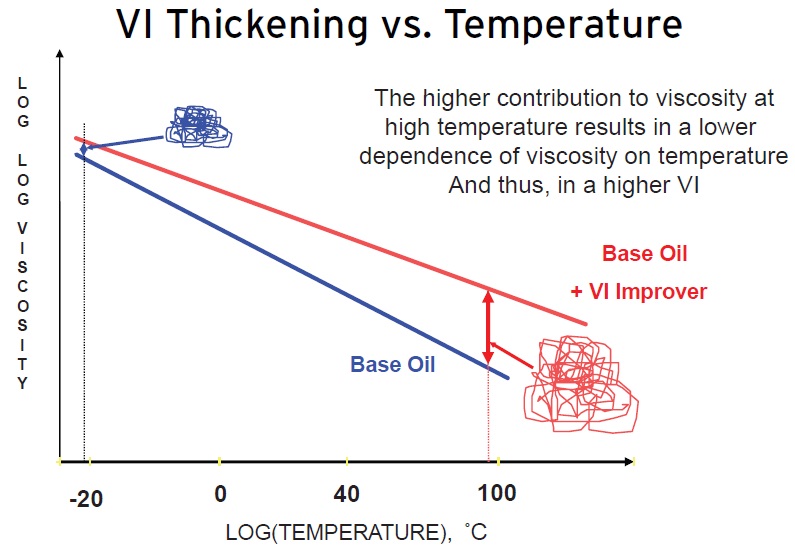 Figure 2. The uncoiling effect of VI improvers enables them to make a larger contribution to fluid viscosity at higher temperatures. (Courtesy of Evonik Oil Additives USA Inc.)
Figure 2. The uncoiling effect of VI improvers enables them to make a larger contribution to fluid viscosity at higher temperatures. (Courtesy of Evonik Oil Additives USA Inc.)
Iyer adds, “The viscosity response to thermal changes of VI improver-added base oil is both nonlinear and reversible. A fluid containing a VI improver will be more viscous than one without at any temperature but will be relatively much thicker at higher temperatures when compared to a fluid without a VI improver.”
Abe says oxidative stability is also a factor in ensuring that the viscosity remains relatively stable. He says, “Oxidative stability is an important performance property in a lubricant operation that is needed for stability at higher temperatures. VI improvers prepared from fully saturated hydrocarbon polymers will show only minimal oxidation during use.”
Dimitrakis points out that use of VI improvers also can lead to improved lubricant properties at low temperatures. He says, “By reducing or eliminating the need for heavier lubricant basestocks, the effect of wax in those oils crystallizing at very cold temperatures is also reduced.”
Nass terms VI improvers as being composed of long and flexible polymer molecules that interact with the base oil and themselves. He says, “This interaction leads to increased resistance to flow, particularly at higher temperatures where VI improvers have a greater impact on lubricant viscosity.”
POLYMER PROPERTIES AFFECTING VI IMPROVERS
Szemenyei considers the molecular weight of the polymer to be an important factor: “The higher the molecular weight, the greater the thickening for a given type of VI improver.”
Szemenyei also indicates that the concentration of the individual monomers used as building blocks to prepare a VI improver is important. “In the case of OCPs, these polymers are based primarily on ethylene and propylene,” he says. “As the ethylene content increases, the thickening effect of the polymer also rises. But there is a tradeoff because higher ethylene content leads to worse performance in the mini-rotary viscometer test (MRV - ASTM D4684).”
The MRV procedure measures the yield stress and viscosity of a lubricant as it is cooled at a controlled rate over a time frame exceeding 45 hours to a temperature between -10 C and -40 C. Szemenyei says, “Another issue is that all mechanical engines shear these polymers differently, meaning that new polymers will have different structures than sheared polymers. Polymers with high ethylene contents may have some of the long ethylene linkages hidden within the molecule. These long ethylene links may more readily co-crystallize with other components in the oil, leading to solidification at a relatively high temperature. This problem has become more acute with the higher paraffin content Group II+ and Group III base oils now used in the low-viscosity grades that require such good low temperature qualities.”
Nass gives a more general view of which properties affect VI improver performance. “Most VI improvers are copolymers made from polymerization of two or more monomers,” he says. “The chemical types of the monomers, their relative proportions, their sequence distribution, the overall molecular weight and the molecular weight distribution are the typical polymer properties that affect VI improver performance. Adjusting any of these properties can change the performance of VI improvers.”
The direct relationship between backbone molecular weight and thickening is readily seen in the curve in Figure 3 for PAMA, polyisobutylene and OCP. A greater percentage of mass of the polymer in the backbone means a larger thickening effect.
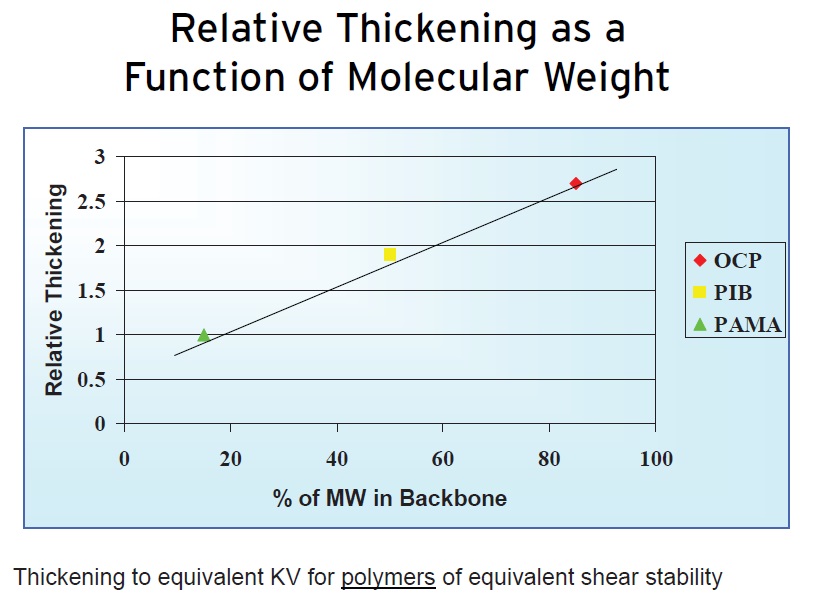 Figure 3. Incorporation of a higher percentage of the polymer in the backbone leads to a larger thickening effect. (Courtesy of Evonik Oil Additives USA Inc.)
Figure 3. Incorporation of a higher percentage of the polymer in the backbone leads to a larger thickening effect. (Courtesy of Evonik Oil Additives USA Inc.)
STLE-member Joan Souchik, technical service manager of Evonik Oil Additives USA Inc., says, “The side chains, chemistry and geometry of the polymer play a major role in determining additional performance benefits like low-temperature fluidity or VI. Using a variety of monomer combinations and processing techniques, one can produce numerous different types of polymer architectures such as linear, branched, hyper branched, star and comb polymers, each of which can have homopolymers, block copolymers or random copolymers.”
Souchik continues by stating that this versatility of PAMA polymers can be used to meet specific lubricant application needs. She says, “PAMAs can be made to impart specific properties to a variety of fluids with different performance requirements. As examples, they can be made specifically to function as pour point depressants that boost low-temperature fluidity without providing thickening or as VI improvers which provide efficient thickening with excellent shear stability.”
But higher molecular weight polymers are more susceptible to shearing which will reduce their durability. Abe says, “In practical operation with polymer-type VI improvers, viscosity drop after a long interval operation causes metal-to-metal contact of gears or bearings. The market trend is moving toward more shear-stable lubricants with lower molecular weight VI improvers.” These species are based on liquid ethylene alpha olefin copolymers or lower molecular weight PAMAs.
Dr. Shanshan Wang, a consultant to Functional Products, discusses how the structure of a VI improver can be modified to optimize lubricant performance. She says, “High molecular weight linear polymers give good thickening efficiency and VI performance. Polymers with long branching structure, multi-arm branching or star structure can give better shear stability. By optimizing the molecular weight, the branching lengths, the crystallization behavior of the polymer, a viscosity modifier with good VI performance, shear stability and low temperature performance can be achieved.”
Meldrum indicates where the current VI improver polymers can best be used in lubricant applications. He says, “Elastomeric vinyl monomer-based polymers such as OCPs or styrene block polymers can be more cost effective in multigrade engine oils. PAMAs, styrene ester copolymers and other types can be more readily tailored for the specific application, whether a transmission fluid, a hydraulic oil, a gear oil or another fluid.”
Briggs also examines how the main polymer types can be used in lubricant applications. “The key is to achieve the right balance in properties,” he says. “For example, the optimum balance of shear stability index (SSI) and thickening efficiency (TE) allows reduced polymer treat rates for engine cleanliness and stay-in-grade performance while maintaining adequate wear protection. PAMAs can deliver a significant VI boost but have poor TE. High ethylene content OCPs provide good thickening efficiency but because of inherent crystallinity on the molecule can jeopardize low-temperature pumpability.”
 ‘By reducing or eliminating the need for heavier lubricant basestocks, the effect of wax in those oils crystallizing at very cold temperatures is also reduced.’
‘By reducing or eliminating the need for heavier lubricant basestocks, the effect of wax in those oils crystallizing at very cold temperatures is also reduced.’
—Bill Dimitrakis, The Lubrizol Corp.
www.canstockphoto.com
EVALUATING VI IMPROVERS
All of the respondents indicate that two of the most important tests are to measure TE and SSI. Dr. Isabella Goldmints, viscosity modifier technologist for Infineum USA LP, says, “TE measures added viscosity per unit mass of VI improver, and SSI measures the percent of polymer-added viscosity loss after a 30-cycle Kurt Orbahn test.”
On the matter of shear stability, Vargo says, “Increasingly, oil manufacturers are requiring more shear-stable polymers with Permanent Shear Stability ratings in the range of 25%, which means that the oil retains 75% of its viscosity and loses 25% of the viscosity imparted in the oil after the oil-polymer blend has been mechanically worked upon and sheared.”
“The Permanent Shear Stability Index (PSSI) test measures the viscosity decrease under actual operating conditions as a compressor oil, hydraulic fluid or motor oil. While simple test methods readily measure VI and thickening efficiency, the Polymer Shear Stability Test is more elaborate and is generally measured by the Sonic Shear Test (ASTM D2603-01). More real-world test procedures used include the Mechanical Share Test (ASTM D6278) and the Kurt Orbhan test.”
Other parameters that can be very important in assessing the performance of a VI improver are listed by Dimitrakis. He says, “Depending upon the application, the VI improver may need to be evaluated for its ability to provide dispersancy, effect on oxidation-related deposits and viscosity increase, effect on soot-related viscosity increase and soot-related wear, effect on high-temperature, high-shear viscosity, traction or internal fluid friction properties and film thickness properties.”
USING VI IMPROVERS OPTIMALLY
With a good number of choices, the lubricant formulator must determine the best way to use VI improvers to maximize product performance.
“There are many ways for VI improvers to contribute to the ability of a lubricant in a specific application,” Nass says. “VI improvers having a high TE are used at low treat rates, which can help minimize deposit and sludge formation. Some VI improvers have only a small impact on cold cranking simulator viscosity, allowing the oils to be formulated with heavier, lower volatility basestocks.
“Some VI improvers are good at maintaining high-temperature, high-shear viscosity, even after mechanical shear and help protect against wear,” Nass adds. “Fuel economy is another area improved by using VI improvers that impart specific viscometric properties to the oil.”
“The benefit of a VI improver can be focused on improving the durability and efficiency of the lubricant,” says STLE-member Doug Placek, president of Evonik Oil Additives USA Inc. He adds, “Finished lubricants are typically constrained by various performance specifications. A formulation incorporating an appropriate VI improver will generally facilitate an economic solution (total balance between formulation cost and performance) which meets and often can exceed the required specifications.”
Szemenyei indicates that formulating the proper VI improver leads to a lubricant that works well at the optimum operating viscosity. He says, “VI improvers enable the lubricant to provide the minimum energy consumption combined with equipment protection.”
Szemenyei also cautions that formulators should look beyond just the treat cost of the VI improver. “Do not mistake judging the cost of using a VI improver by the VI improver cost alone,” he warns. “The lubricant producer should look at the overall impact of the VI improver on the fully formulated oil. Choose the proper level of shear stability for the application.”
Dimitrakis points out that the choice of a VI improver is application dependent: “The formulator should evaluate the high- and low-temperature viscometrics required, the requirements for after-shear viscosity and viscosity loss in service or ‘stay-in-grade,’ the need for any other performance which the VI improver contributes and evaluate to insure no-harm in other lubricant performance tests.”
Dimitrakis further emphasizes that formulators need to follow several steps in using VI improvers. He says, “We feel that formulators should follow industry-recognized interchange protocols for VI improvers and develop the necessary data on a specific formulation using any alternative VI improver. The OEM must approve any interchange, and some or all of the OEM approval program will have to be repeated with the alternative VI improver for OEM-approved lubricants. Non-viscometric tests should also be included because the VI improver can have a substantial effect on performance areas outside of viscosity.”
An effective compromise between thickening efficiency and shear stability can be achieved by adopting the VI improver with a narrow molecular weight distribution. Abe says, “Formulators should define the target performance of the lubricants they are developing. Usually there is a trade-off between thickening efficiency and shear stability for most polymers, therefore formulators should decide on the molecular weight of the VI improvers.”
“But narrowing the molecular weight distribution of the polymer (ratio of weight average molecular weight to number average molecular weight) can be an effective compromise since polymers with narrower molecular weight distributions have fewer higher molecular weight chains,” Abe adds. “So the formulator can work with a polymer that has both good thickening efficiency and shear stability.”
Besides looking at TE and SSI, Goldmints feels formulation cost and flexibility also are very important. She says, “In considering formulation cost, some VI improvers require the addition of higher quality (and thus higher priced) base oil to meet target fresh oil viscometrics. Other performance characteristics of VI improvers such as compatibility with a variety of basestocks and additive components that add formulation flexibility can be considered. The type of VI improver chosen can have a significant impact on total formulation cost and is a key criterion in formulation development.”
VI AND ENGINE OILS
One of the leading applications for VI improvers is in engine oils. Their use enabled multigrade engine oils to be developed that show reduced temperature dependency. VI improvers are a critical component in the latest ILSAC passenger car motor oil specification, GF-5 (
1).
Viscosity plays an important role in the performance of an engine oil, as shown in Figure 4. Nass says, “In automotive applications, multigrade oils formulated with VI improvers retain viscosity under high engine shear at high temperatures, while maintaining oil pumpability at low temperatures. The main challenge to formulators is to achieve the correct balance of properties among all of the components in the finished oil, namely the DI package, VI improver, pour point depressant and base oils to get the desired performance at the lowest possible cost. Variations in any of those components may dictate the choice of the VI improver for a specific application.”
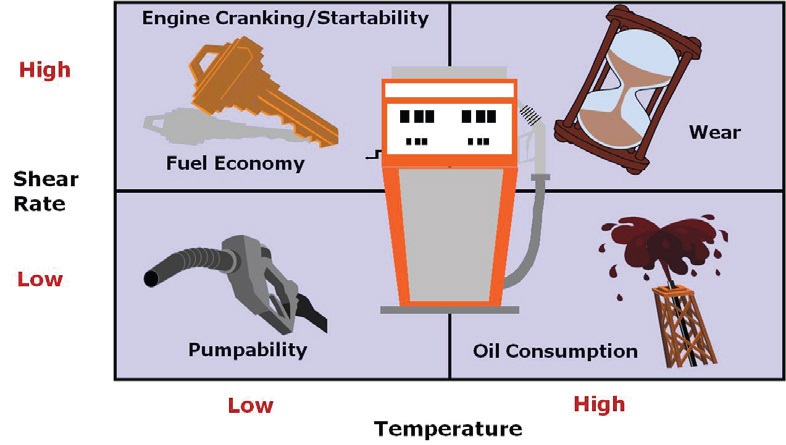 Figure 4. VI improvers perform a key function to enable engine oils to function under the four types of shear rate, temperature conditions shown. (Courtesy of Chevron Oronite Company LLC)
Figure 4. VI improvers perform a key function to enable engine oils to function under the four types of shear rate, temperature conditions shown. (Courtesy of Chevron Oronite Company LLC)
VI improvers can provide a significant benefit to engine oils that goes beyond just maintaining viscosity, according to Dimitrakis. “The VI improver can significantly reduce soot-mediated oil thickening in low-emission diesel engines, which helps protect the engine from failure due to lack of lubrication,” he says. “Modern engine oils are formulated to meet high-temperature, high-shear viscosity requirements to insure sufficient bearing protection. VI-improver chemistry with better HTHS response allows the lubricant to have a lower kinematic viscosity profile within the grade span and demonstrate better fuel economy.”
Goldmints stresses the importance of VI improvers in modifying the rheological behavior of the engine oil. She says, “The rheological characteristics of the lubricant define oil film formation between moving parts in the engine. It is this film that protects parts from wear and reduces frictional energy losses in the engine. Some VI improvers are better than others for long drain applications.”
The leading VI improver used in engine oils is OCPs. Placek says, “OCPs furnish the best economic/performance balance in engine oils. They are efficient in thickening engine oils at high temperature.”
Selection of the VI improver in lower viscosity engine oils is more critical to ensure good engine oil performance. Goldmints says, “Lower viscosity engine oils require less VI improver to meet fresh oil viscometrics but also require higher performance from the VI improver to deliver wear protection and robust performance as the lubricant ages in service.”
Meldrum stresses that more emphasis needs to be placed on viscosity retention. He says, “Viscosity retention means minimizing viscosity change during service life and under all operating conditions in order that engine durability is maintained.”
Placek believes that the added performance requirements for a VI improver in lower-viscosity engine oil may lead to the need to shift to a higher-performing polymer. “Some concern has been expressed about a loss of hydrodynamic lubrication that may accompany the use of lower viscosity oils for improved fuel efficiency,” Placek says. “If high-performance VI improvers can help maintain equipment durability while also delivering improved fuel efficiency, then there could be a shift to higher performance VI improvers for engine oils in the future.”
VI AND DRIVELINE FLUIDS
The main function of VI improvers in driveline fluids (gear and automatic transmission fluids) is to also minimize viscosity changes over a potentially wide operating temperature range. Durability of the VI improver is even more important than with engine oils.
Abe says, “Driveline oils are fill-for-life lubricants, which means that the VI improver must exhibit good shear stability over the operating life of the fluid. VI improvers also are an important factor in increasing the energy efficiency of the lubricant by decreasing the viscosity of the fluid at low temperatures.”
Placek points out that a key concern in driveline fluids is the need to deal with the stress placed on the lubricant. He says, “Highly shear stable VI improvers are needed to deal with the concentrated mechanical stresses seen in driveline applications. VI improvers also need to provide good performance at temperatures down to -40 C. These needed characteristics are well met by PAMA VI improvers.”
Other benefits that VI improvers can provide relate to wear control and dispersancy. Dimitrakis says, “The VI improver must enable the lubricant to perform under all conditions, from cold starts in a Canadian winter to towing a trailer through the U.S. desert southwest in a summer. Lubricant film thickness is affected by the VI improver which relates to durability and wear. The traction properties or internal fluid friction of the lubricant also can be influenced by the VI improver. This affects the lubricant’s temperature during severe service such as towing.
“Dispersancy is another characteristic furnished by VI improvers, which will prevent deposits on friction materials in transmissions or on seals over the service life of the lubricant,” Dimitrakis adds. “Above all there is ample data linking higher driveline VI to greater efficiency and fuel economy.”
VI improvers also contribute benefits to automatic transmission fluid (ATF) performance at high temperatures. Nass says, “Maintenance of viscosity at operating temperatures enables VI improvers to help the fluid achieve stable friction and suitable oil film thickness.”
VI AND HYDRAULIC FLUIDS
For some time hydraulic fluids have been treated as commodity lubricants that could not possibly have much of an impact on the performance of the pump. Placek says, “Going back 15 years, virtually no off-highway equipment OEM put a high-VI hydraulic fluid in its equipment. Rather, they would use an ATF with good low-temperature properties. The problem was that the VI improver in the ATF was not designed to operate under the 3,000 to 5,000 psi operating pressures seen in these systems.”
Two factors influencing pump efficiency are mechanical efficiency and volumetric efficiency. As shown in Figure 5, they work in opposite directions.
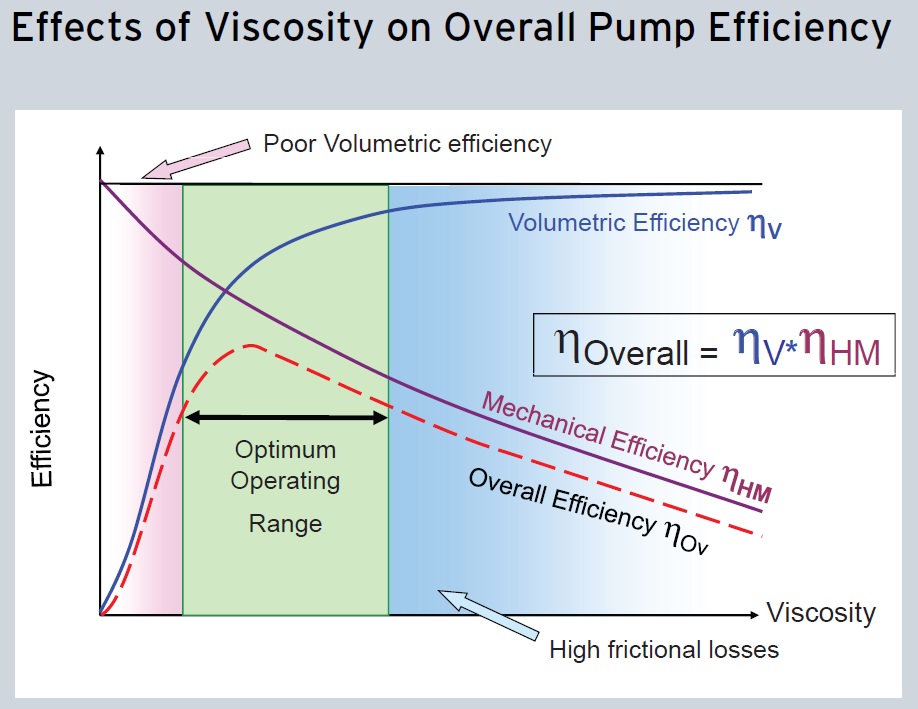 Figure 5. Pump efficiency is affected by two factors (mechanical efficiency and volumetric efficiency) that move in opposite directions. The objective is to find the viscosity window or a sweet spot for a specific system where the pump operates at an optimum level. (Courtesy of Evonik Oil Additives USA Inc.)
Figure 5. Pump efficiency is affected by two factors (mechanical efficiency and volumetric efficiency) that move in opposite directions. The objective is to find the viscosity window or a sweet spot for a specific system where the pump operates at an optimum level. (Courtesy of Evonik Oil Additives USA Inc.)
A region of maximized mechanical efficiency and volumetric efficiency can be found that produces optimum pump efficiency. Placek says, “Pumps typically operate most efficiently within a viscosity window or a sweet spot, the limit of which depends on the pump type. The hydraulic application determines the type of pump used. Lubricants have to be selected to match the pump and the application.”
Dimitrakis says, “Mechanical efficiency is related to the energy needed to move the fluid through the hydraulic circuit, including the hydraulic pump, lines, cylinders and the hydraulic motor. Lower viscosity tends to improve the mechanical efficiency as fluid drag is reduced. Volumetric efficiency is related to hydraulic pump output at pressure. At low viscosity, there is internal leakage within the pump that reduces volume output per time, reducing the amount of work that can be accomplished and, hence, efficiency. Higher viscosity reduces internal leakage, thus maintaining volume output at high pressure, hence, maintaining efficiency.”
One application where use of this concept has optimized hydraulic fluid performance is in off-highway equipment (
see Figure 6).
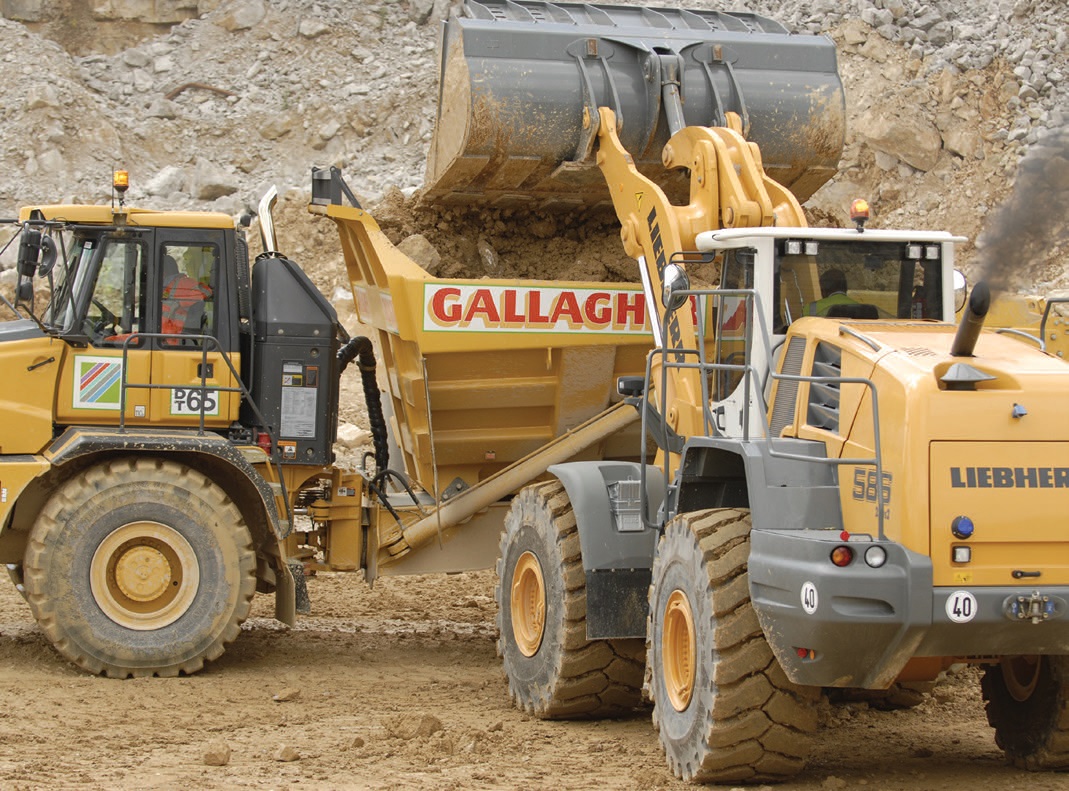 Figure 6. The performance of hydraulic fluids in off-highway equipment has benefited greatly from the use of VI improvers. (Courtesy of The Lubrizol Corp.)
Figure 6. The performance of hydraulic fluids in off-highway equipment has benefited greatly from the use of VI improvers. (Courtesy of The Lubrizol Corp.)
Field tests in a medium-sized excavator show that changing from a fluid with a VI of 142 to one of 200 can lead to a significant improvement in fuel economy, productivity and emissions reduction (
2). In this study, fuel economy improvements of 15.4% and a productivity improvement of 14.3% was realized vs. the OEM-specified fluid.
Nass says optimizing fluid viscosity is important because problems can result if the fluid has either too low or too high a viscosity. “Excessive leakage at low viscosity causes more heat to be generated in the system, causing premature oxidation if sufficient cooling is not in place,” he says. “On the flip side, a high viscosity fluid also can cause issues by starving the pump inlets as they draw the fluid from the reservoir.”
OTHER APPLICATIONS
All of the additive company representatives believe that VI improver use can be extended to other applications. Briggs explains, “In general, any lubricant that is designed to work in a wide temperature range can benefit from the VI improver. The pros and cons of such use might need to be evaluated.”
Abe gives the examples of industrial gear oils and greases as two lubricant types that can benefit from using VI improvers. He adds, “In industrial applications, improving energy efficiency and getting better durability are also important demands placed on the lubricant.”
Dimitrakis further explains the benefits that VI improvers can impart to greases. “VI improvers are widely used in grease to provide thickening while helping low-temperature mobility,” he says. “They also can improve resistance to water wash-off and spray-off and increase cohesiveness.”
Placek cites other uses for VI-improved fluids, including wind turbine fluids, tractor fluids, shock absorber fluids, transformer fluids, turbine oils, compressor oils and marine fluids. He says, “The growing demands for lubricants to provide optimum performance under more stressful conditions for a long period of time has led to a shift to lower molecular weight VI improvers to meet needs in automotive and industrial applications. For example, in off-highway construction, companies have downsized equipment but not compromised performance. The result is that VI improvers have needed to improve to enable the lubricant to display the viscometrics to better handle higher temperatures.”
CAPABILITIES OF CURRENT VI IMPROVERS
For the most part, all of the respondents believe currently available VI improvers provide adequate performance, although there is certainly room for improvement. Says Dimitrakis: “Hardware continues to change as a result of the drive for reduced emissions, increased fuel economy and better durability, and the lubricant performance will have to change as well—meaning new requirements for both the performance additive and VI improver.”
Meldrum adds, “Significant strides have been made in the past few years to increase VI improver performance, permitting lubricants to be blended to a higher viscosity index, provide better fuel economy and lead to fewer engine deposits. Additional VI-improver improvements to provide increased engine and after-treatment system durability, while maximizing fuel economy, can be expected in the future.”
Goldmints comments on several other challenges for VI improvers. “Market trends such as longer drains, increasing use of Group III base oils and the growth of biodiesel require careful consideration in VI improver selection,” she says. “The lubricant industry is driven to make every possible improvement in fuel economy, which means that new VI improver technologies are under development to reduce fuel consumption while providing adequate engine wear protection.”
Nass believes that for the lubricant industry to develop the ideal VI improver, improvements must be made in a number of areas. He says, “The ideal VI improver would be an inexpensive polymer that thickens the oil at low treat rate (high TE), maintains high-temperature, high-shear viscosity above the minimum required by SAE J300 and OEMs, provides optimal viscometrics for fuel economy and has minimal impact on the low-temperature properties as evaluated by the Cold Cranking Simulator and Mini-Rotary Viscometer tests. For all VI improver technology types, there are opportunities for improvement in each of these areas.”
Iyer notes an ongoing industry trend toward a smaller and leaner equipment footprint. “The reduction in equipment size is placing more pressure on the lubricant to provide excellent performance,” he says. “In our experience, VI improvers with good thickening efficiency, shear stability and low-temperature performance such as PAMAs have proven to be very effective in applications testing done over the past decade.”
Iyer adds, “In hydraulic fluids systems, the trend is moving toward smaller sumps. In the past, the ratio of the size of a sump to the flow rate of a pump was 3:1. Now manufacturers are pushing the ratio to be equal or even less than 1:1, which means that hydraulic fluids cycle through the system more frequently and, as a result, pick up more heat.”
He concludes, “The challenge is to improve fuel efficiency and maintain fluid life by either cooling the oil, which expends more energy, or improving the hydraulic fluid so it operates effectively and efficiently at higher temperatures. Newer, high-VI hydraulic fluids with better additive packages are making inroads into meeting this challenge.
CONCLUSION
VI improvers will remain an integral additive needed to ensure that lubricants maintain optimum performance. There are a wide number of choices for the formulator, so selection is critical, but as Placek adds, “There is no such thing as a good or bad VI improver. All of these additive types have value and give the formulator flexibility to develop lubricants with the maximum performance/cost benefit.”
Further information on VI improvers can be found in two recent references (
3, 4).
REFERENCES
1.
Canter, N. (2010), “Special Report: Proper Additive Balance Needed to Meet GF-5,” TLT,
66 (9), pp. 10–18.
2.
Casey, B. (2009), “Why Hydraulic Oil is Different and How Your Oil Choice Can Save You Money,”
Machinery Lubrication, January–February, pp. 28–29.
3.
Covitch, M. (2009), “Olefin Copolymer Viscosity Modifiers,” in Rudnick, L., editor,
Lubricant Additives: Chemistry and Applications Second Edition, CRC Press, Boca Raton, Fla., pp. 283–314.
4.
Kinker, B. (2009), “Polymethacrylate Viscosity Modifiers and Pour Point Depressants,” in Rudnick, L., editor,
Lubricant Additives: Chemistry and Applications Second Edition, CRC Press, Boca Raton, Fla., pp. 315-338.
 Neil Canter heads his own consulting company, Chemical Solutions, in Willow Grove, Pa. Ideas for Tech Beat items can be sent to him at neilcanter@comcast.net
Neil Canter heads his own consulting company, Chemical Solutions, in Willow Grove, Pa. Ideas for Tech Beat items can be sent to him at neilcanter@comcast.net.